Growing Upward – A
By John Palka — Posted May 29, 2016
A tree’s form is one of the characteristics that a skilled naturalist uses to identify it, to answer the basic question What is it? Together with the bark, the leaves or needles, and the flowers or cones, the form proclaims I am a Douglas fir, or I am an alder, or I am a grandmother cedar. But notice something that, once you think of it, is rather startling. Like these ghostly Sitka spruce in the silver forest bordering Rialto Beach on the Olympic Peninsula, most trees grow pretty much straight up.
You can specify the differences among various tree species, but if you focus on properties that they share, rather than on properties that distinguish them, you quickly realize that vertical growth characterizes the vast majority of trees, and indeed the vast majority of all plants. Upward growth is so common that we usually take it for granted and don’t think of asking any questions about it.
Biologists, however, have been intrigued by this ubiquitous characteristic of plants at least since the 1700s. They have repeatedly asked, how is it that the shoot of a plant typically grows upward, the root grows downward, and the branches grow sideways? In other words, how does a plant “know” which way is up and which way is down? And if it knows which direction is which, what mechanisms direct its growth in the appropriate direction?
I have taken an informal survey of my friends, asking them how it comes about that trees grow upward. The hesitant answer I have most often received is that trees grow upward because they grow toward the light. This is a reasonable hypothesis, because it is common experience that plants do grow toward the light. You can easily see that many garden bushes grow more abundantly toward the sunlight than they do toward the shade, and that many house plants grow better toward the window than away from it.
But here’s the rub. Unless you are in the tropics, the Sun is never directly overhead. Even at noon on the summer solstice, north of the Tropic of Cancer the Sun is southerly and south of the Tropic of Capricorn it is northerly. If sunlight were the dominant guiding factor in plant growth, all plants in our northern climes should lean toward the equator rather than growing straight up!
So, light manifestly does affect plant growth, but the path of the Sun across the sky does not account for the predominantly vertical growth patterns of plants that we actually observe all over the planet. What is another reasonable explanation?
Let us consider gravity.
In classical physics, gravity is a force that draws all objects to each other. According to Newton’s Law of Universal Gravitation, the greater the mass that objects have and the closer together they are, the greater is the force between them. Reciprocally, the less mass they have and the further apart they are, the lesser is the force. As Newton first recognized, and as we now know from not only from Newtonian classical but also from Einsteinian relativistic physics, gravity is what holds objects to the surface of the Earth, the Earth in its orbit around the Sun, and the solar system in its path around the center of our galaxy. Indeed, gravity underlies the physical structure of the entire Universe. What’s more, its effect is not limited to interactions between large objects. Our atmosphere—the very air we breathe—would drift away were it not for the pull of gravity between its tiny molecules and our relatively massive Earth.
So, is it possible that growing plants use gravity as their cue to which way is up? Let’s explore this idea with a simple experiment that we can perform right on the front porch. All we need is a plant that is actively growing, and a simple way of changing its orientation in the field of gravity. In my own version of the experiment, I went to the nearest nursery, bought three 4-inch pots of herbs, and set them on the porch railing to grow. I used photographs to record what they looked like before, during, and after reorientation with respect to gravity. To reorient, I simply laid each pot on its side. This meant that instead of being oriented up/down relative to the Earth’s gravitational field, the growing stems were oriented sideways.
Here’s the outcome of the experiment, illustrated by the growth pattern of a marjoram plant. As you can see in the picture below, taken at noon on day 1, its stems were vertical. There was a slight curvature, but nothing that would confuse the experiment.
As soon as I took this picture, I placed the pot on its side. Just twenty-four hours later the plant looked like this.
The stems had already redirected their growth and once again were growing nearly vertically in the field of gravity. The response was more dramatic than I had expected, and was even clear within four hours!
Being curious about whether this was a repeatable behavior, I waited another day and then turned all the plants back into their original orientation. Twenty-four hours after being turned upright, this is what the marjoram looked like.
Its stems had reverted to growth in the usual upward direction, but retained a visible “memory” of their experience of being placed sideways.
In this demonstration the distribution of light was not controlled, so I took one additional simple step. Once again, I laid the plants on their sides, but this time I placed them in a tightly closed cardboard box in our basement. Thus, they were in uniform darkness where light could provide no cues. A few hours later the outcome was the same as it had been in daylight—bending and upward-directed growth.
The shape of the plant once again revealed its history: The first upward bend in each stem had developed while the plant was growing on its side in daylight, while the second, just as vigorous, developed as the plant later grew in the dark. Once these manipulations had been completed I transferred the marjoram plant to a large pot in our front garden, where it is now happily growing upward with no further disturbance!
So, everything we have seen thus far is consistent with our initial hypothesis that the upward growth of a plant stem is guided by gravity. Reorientation in the field of gravity causes the plant to redirect its growth so it once again grows upward, away from the center of the Earth, even when there is no light to direct it. Light certainly affects the growth pattern of many plants, but gravity is the main factor guiding them upwards.
A plant’s form reflects its growth over time not only under experimental conditions, but also in nature. Look at these western hemlocks (Tsuga heterophylla) growing in a wonderful preserve on Whidbey Island close to Seattle called the Saratoga Woods.
Most of the trees are growing vertically. The one in front, however, was evidently bent over at some point in its history. It then grew in such a way that over a period of years it, too, produced a vertical trunk, just like its neighbors.
Having established that the growth pattern of plants is, indeed, responsive to the pull of gravity, it is natural to ask how this happens—how plants recognize the direction of gravity’s pull, and how they translate this information into the direction of growth. This will be the subject of another post. In the meantime, as you walk reflect on how gravity ties both trees and us inexorably to our Earth, and indeed to the entire Universe!
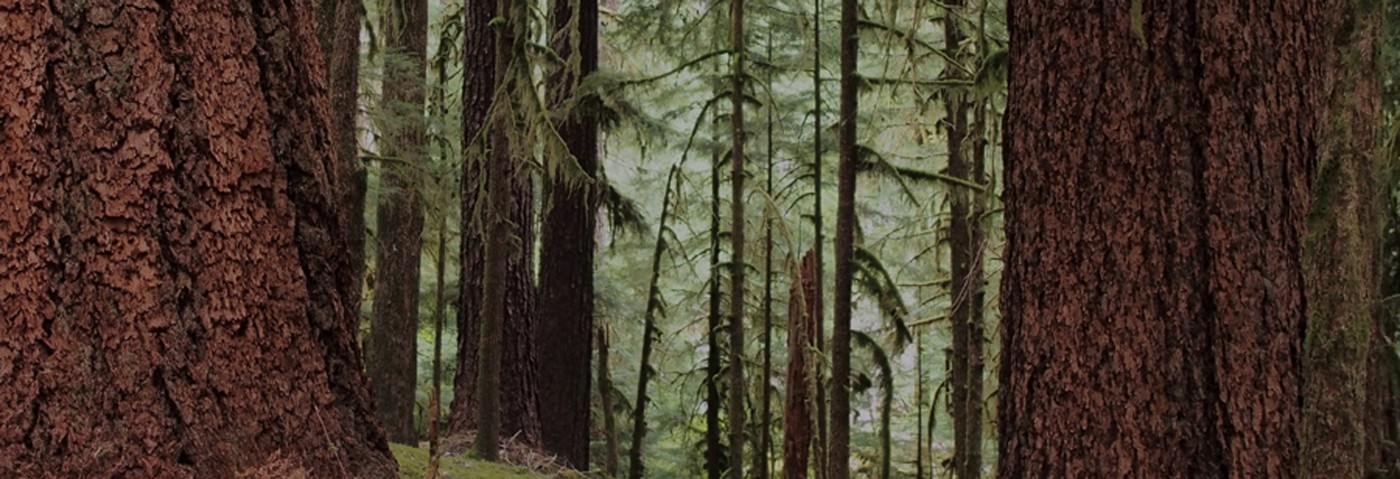
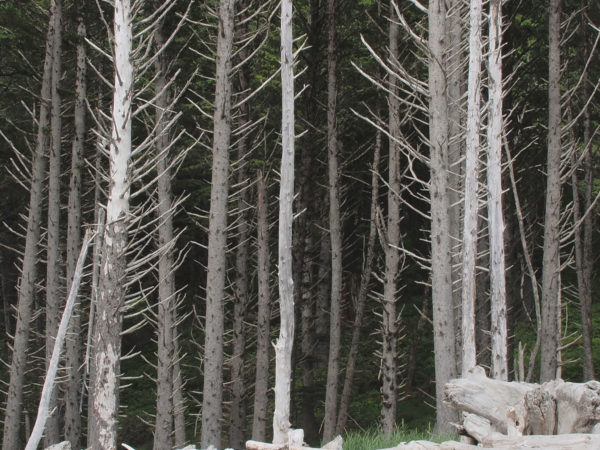
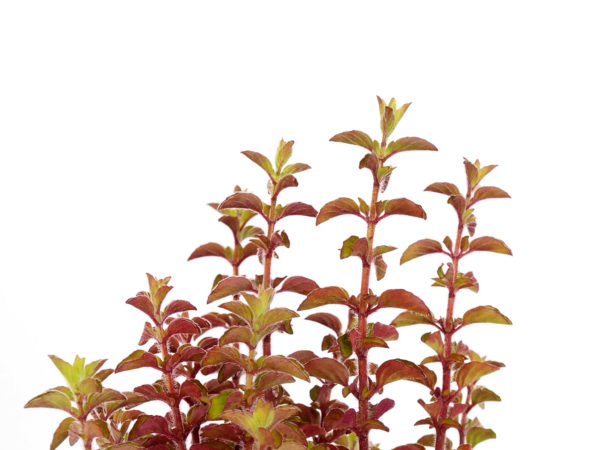
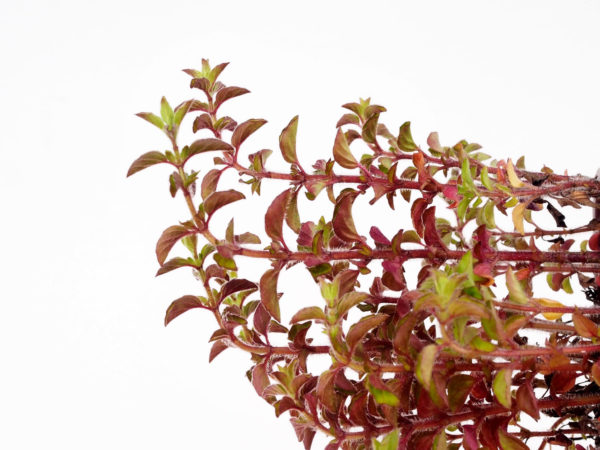
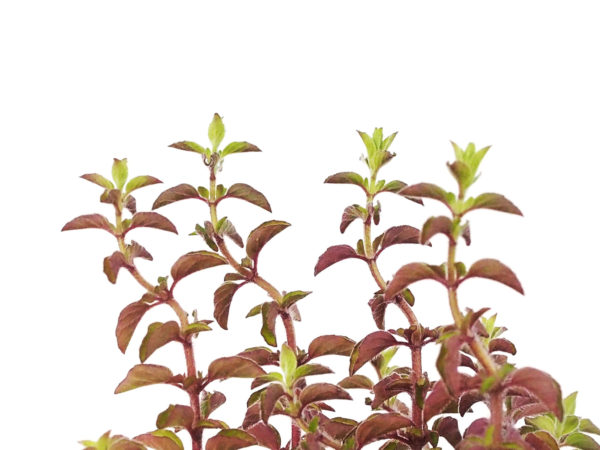
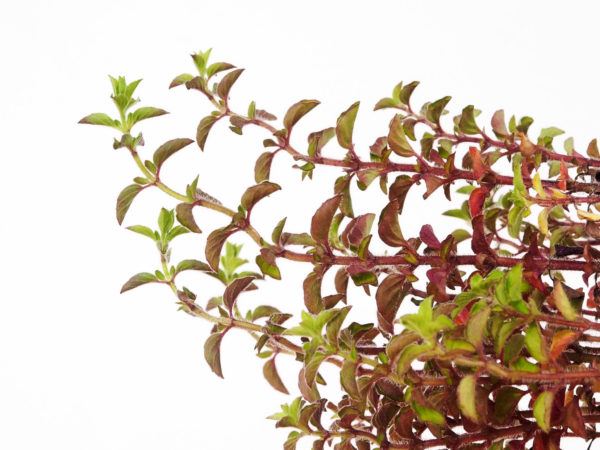
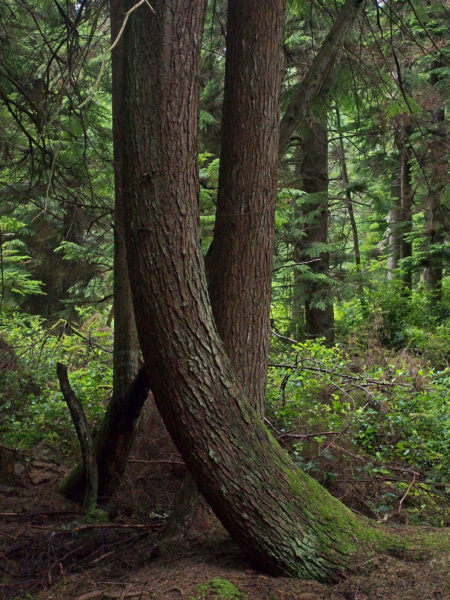
Loved that experiment..! Yes!! Get some data..! Such a simple, but oh so powerful posting. Thanks Johnny.
Isn’t real life amazing?!
John, Awesome as always. As a bonsai hobbyist, I know we have to compensate for this, and this is the time of year to do it. If you let it, the tree will just shoot up. So I’m hoping that future post you talk about will explain more than I currently understand (though many of my more experienced hobbyists do) about the hormones involved.
Thanks,
Michael Cavanaugh
Religious Naturalist Association
I’ll do my best with the hormones. They’re complicated!
That was lovely!!
Thanks, Peter!
Nice and simple John. Keep them coming.
Many thanks, Greg. Simplicity is a challenge, isn’t it?!
Amazing experiment John!! I have a question if you don’t mind. Why is it important for plants to grow upwards??
The experiment is actually a classic dating back to the 19th century, but it’s still wonderful to see it work so clearly! Not all plants grow upward. For example, there are lots of algae that float in the water or grow along rocky surfaces, and among land plants there are creepers that hug the ground. However, all plants depend on photosynthesis and for this they need sunlight. In most instances the best way to maximize exposure to light is to grow upward.
So simple, yet so powerful an experiment!
It is, isn’t it? I’ve started to think that it might be fun to do with some young students.